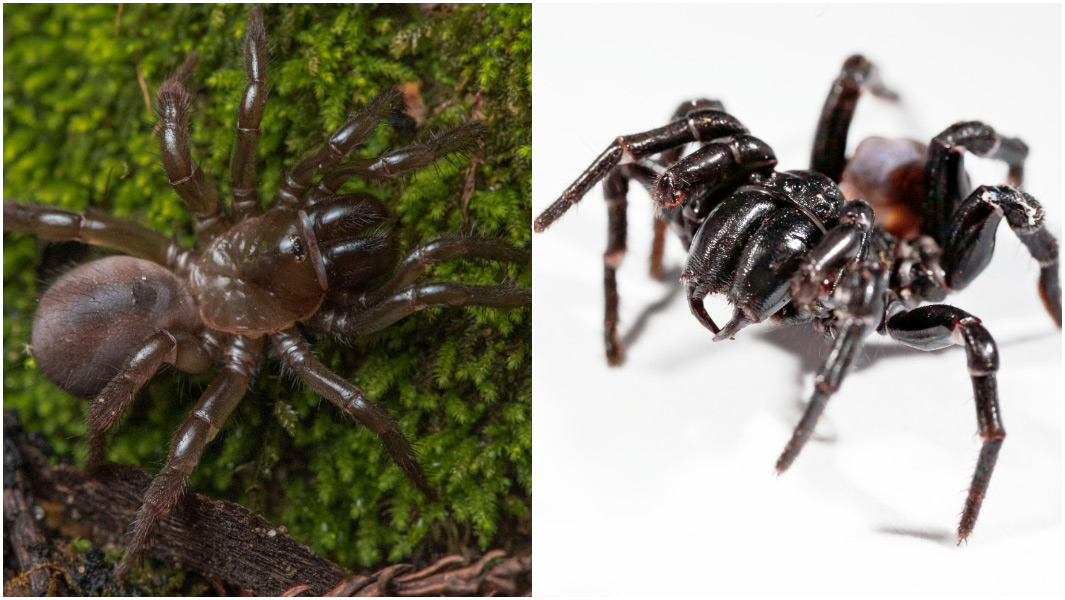Scary spider records: bloodsuckers, bird-eaters and more

Despite being responsible for relatively few deaths each year, spiders are one of the most feared animals worldwide.
The mere thought of their spindly, scurrying legs is enough to make some people shudder.
We’re celebrating this spooky season by looking at some of the scariest spiders on the planet.
If you didn’t have arachnophobia already, you probably will by the end…

Largest spider
Prowling the rainforests of South America is the Goliath birdeater (Theraphosa blondi).
Similar in size to a dinner plate, it’s the world's largest known spider by body length (measuring up to 13 cm; 5.1 in) and by mass (weighing up to 175 g; 6.2 oz).
@guinnessworldrecords Largest spider 🕷 Male goliath bird-eating #spider (Theraphosa blond) 🇸🇷🇬🇾 28 cm (11 in) #LearnOnTikTok#GWRoriginals
♬ original sound - Guinness World Records
You can probably guess how the Goliath birdeater earned its name, however this species also enjoys feasting on mice, lizards, frogs and insects. It’s an aggressive, opportunistic predator that will hunt anything smaller than it is.
After killing its prey, the Goliath drags its meal back inside its burrow to begin the digesting process. They do this by liquifying the insides of their prey and sucking it dry.
The Goliath birdeater’s leg span is only second to the giant huntsman (Heteropoda maxima), which is considered the largest spider by leg span.

Most venomous spider
This terrifying title belongs to the male Sydney funnel-web spider (Atrax robustus).
"Most venomous" is defined as the most toxic to humans, as some venomous spider species show varying degrees of toxicity to different animal species envenomed by them.
As its name suggests, this species of funnel-web spider is native to Sydney, Australia, where it can be found lurking in moist habitats; under logs, foliage and even in gardens!
A bite from this scary spider is immensely painful and can cause nausea, vomiting, confusion and unconsciousness.
Just 0.2 mg/kg of the male’s venom is a lethal dose for primates (including humans). There are many species of funnel-web spiders in Australia but only male Sydney funnel-webs have caused human deaths.
Due to a quirk of evolution, Sydney funnel-web venom is not particularly dangerous to many other animals.
Fastest spider
The speediest spider on Earth is the desert-dwelling Moroccan flic-flac spider (Cebrennus rechenbergi), which can reach speeds of up to 1.7 m/s (3.8 mph) when trying to escape predators.
It reaches these super speeds (equal to around 100 body-lengths a second) using a unique rolling motion, similar to the acrobatic flic-flac movements used by circus tumblers.
When threatened, the flic-flac spider will launch itself into a series of forward or backward flips, gaining speed with each one. This technique allows it to double its normal speed, but uses a lot of energy – spiders can only do short bursts before getting tired.

Strongest spider
This spider never skips leg day.
Bothriocyrtum californicum, aka the Californian trapdoor spider, takes its name from the covering it creates over the entrance to its underground burrow, akin to a trapdoor.
This strong spider is able to resist a force 38 times its own bodyweight attempting to open its trapdoor.
It would be similar to an average man trying to hold a door closed which was being pulled by the weight of a small jet on the other side.
Even the best Olympic powerlifters are only able to lift three times their own bodyweight!
Most bloodthirsty spider
Evarcha culicivora, the ‘vampire spider’, is a species of jumping spider that loves drinking blood. They can only be found around Lake Victoria in Kenya and Uganda.
The vampire spider gets its fix of blood by feeding upon female Anopheles mosquitoes, in particular those that have recently sucked blood from a host animal.
Vampire spiders are fussy eaters. They won’t eat male Anopheles because these mosquitoes feed on sugar and nectar instead of blood.
E. culicivora is the first-known predator to consume vertebrate blood indirectly in this manner, as well as the first to select its prey based upon what it has eaten.
Most spiders on the body in 30 seconds
We no longer monitor this record, but watching these past attempts is sure to make you squirm in your seat.


